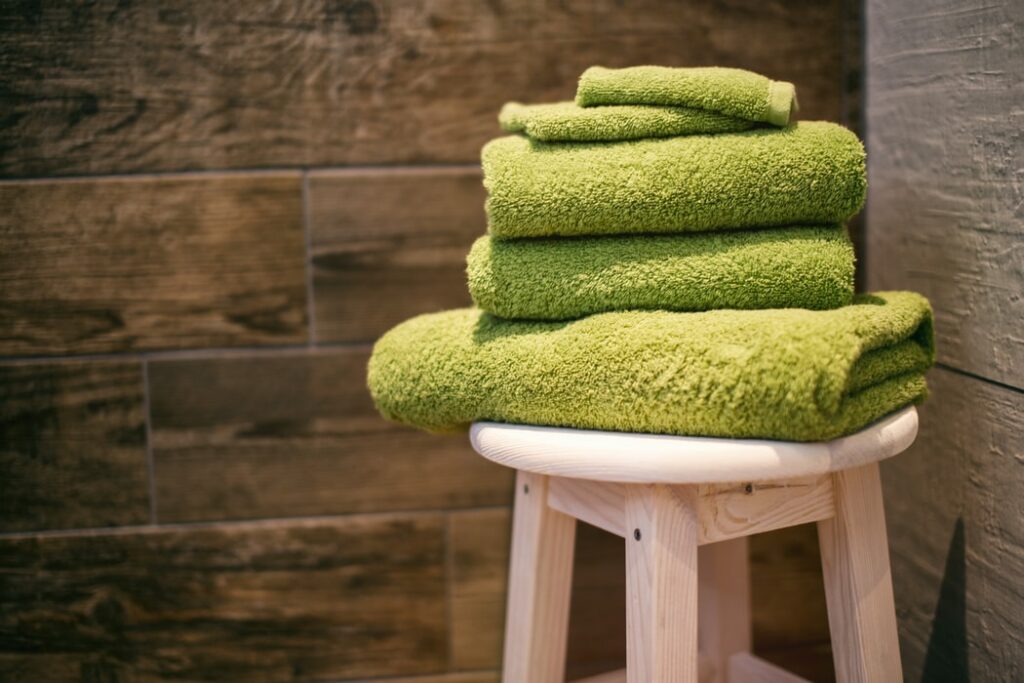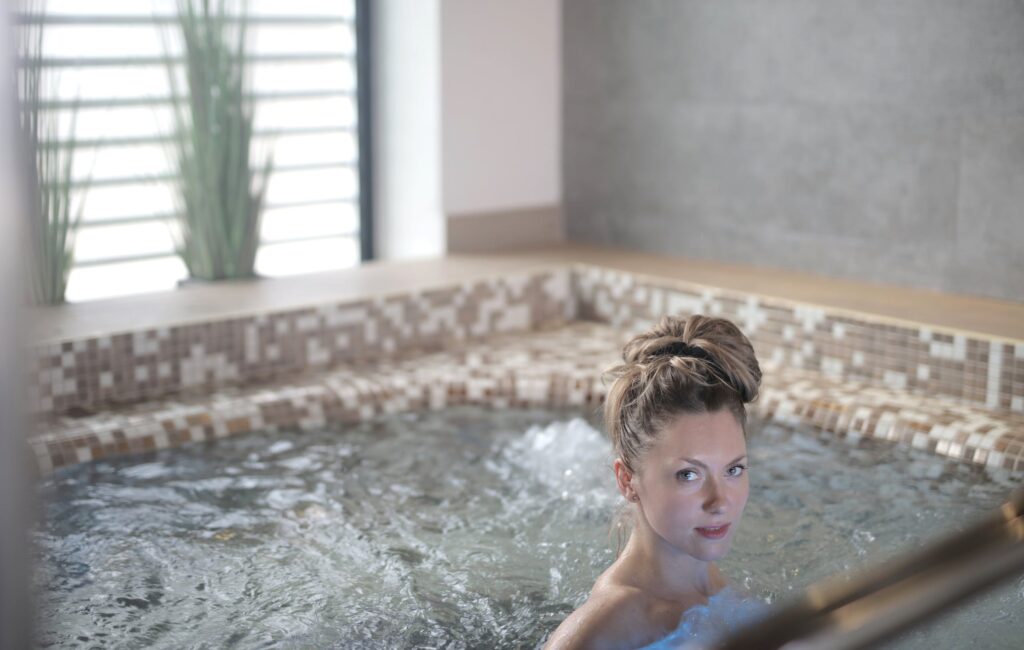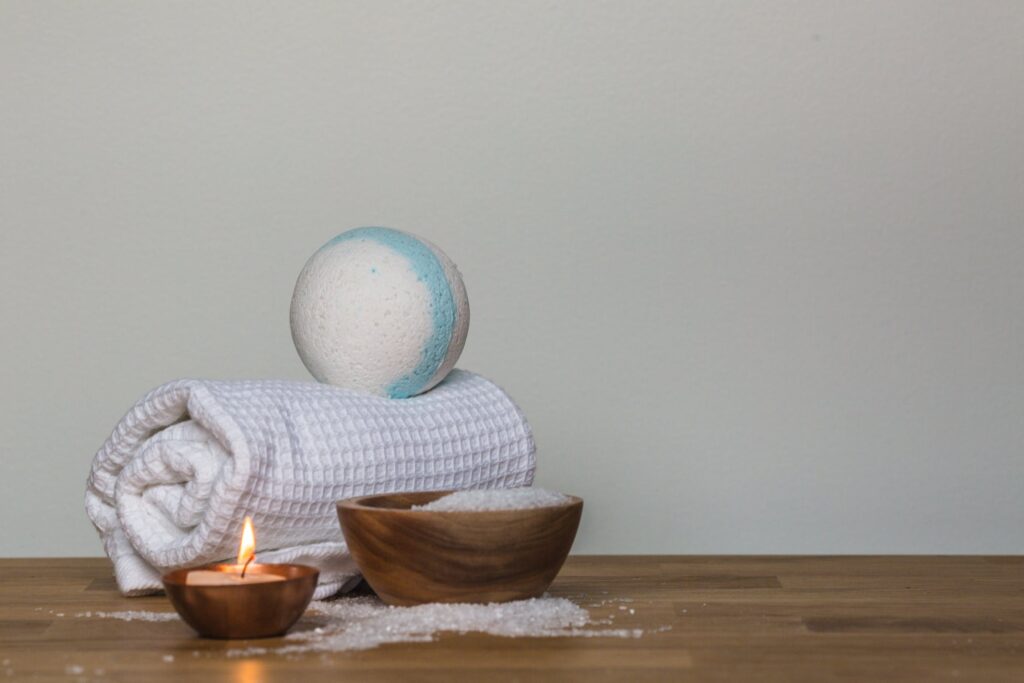A lot of people are conscious of the beneficial effects that frequent sauna visits can have on one's health. On the other hand, there are a couple of straightforward actions that you can do to ensure that you are making the most of your time spent in the sauna. You'll notice a gradual improvement in the outcomes you obtain from your sauna practice if you follow enough of these guidelines, do them the right way, and do them enough times.
The vast majority of us are undoubtedly under the impression that the only advantages of using a sauna are for unwinding and getting some shut-eye. That is not the case at all! Utilizing a sauna can have a number of positive effects on your body, including improving the overall well-being of your heart and providing some much-needed relief from stress.
Before you go off to the sauna that's closest to you, there are also some crucial restrictions that you need to understand about too. However, there's no need to get worked up about it because we'll cover all you need to know about the benefits of saunas as well as the rules that govern their use.
FAQs About Sauna
In terms of microbiology, a sauna does not pose a health risk, as the microbes that are typically found there are part of normal human flora. The amounts are usually too small to result in an infection, and microbes are unable to penetrate healthy, unbruised skin.
The sauna/steam room should be used “2-3 times a week for no more than 10-20 minutes at a time,” Jay says. Some individuals like to opt for intervals. “You can do 15 to 20 minutes inside the room, take a 5 minute break outside the room, and then go back inside, repeating this for 3-4 cycles.”
The amount of time spent in a sauna detox session may vary depending upon your tolerance and daily activity level. To get your body accustomed to infrared therapy, start with 10-15 minute sessions every other day. Gradually increase towards 40 minute daily sessions in the optimal temperature range. Listen to your body.
If you're not properly hydrated, you shouldn't stay inside a sauna for longer than 20 minutes, as you're risking dehydration. However, if you're fit, healthy and hydrated, you can stretch this out into a significantly longer period of time, in the area of 30 - 45 minutes, even an hour.
Large, observational studies in humans have identified strong links between sauna use and lower risk for age-related conditions, such as cardiovascular disease, cognitive decline, and premature death.
What Are Saunas?
A space that has been heated to an average of 70 to 100 degrees Celsius is considered to be a standard sauna. The popularity of saunas is continually on the rise all around the world, but they have always been extremely well-liked in the Nordic countries.
The level of humidity in a sauna is critical to its operation. Humidity levels in traditional Scandinavian-style saunas range from about 10 to 20 percent, but in Turkish sauna rooms, those levels can be significantly higher. The humidity in Turkish saunas can reach close to one hundred percent at times. Steam has a calming and cleansing impact on the body, and wet saunas do this by combining humidity and heat to produce steam.
Your body will produce perspiration, and you will notice an increase in your heart rate as a result of the dry heat in a sauna. Sweating, which has been shown to have a cleansing impact, and having a higher pulse rate, which can occasionally be high enough to imitate physical exercise are two of the many benefits that come from sitting in a sauna.
It's not a novel concept to engage in so-called "sweating treatment" as a means of improving one's health. According to some estimates, the Mayans employed it as far back as 3,000 years ago, and it has a history of widespread use in places like Finland dating back thousands of years. In addition, the majority of residences in Finland include private saunas, which may be attached to the house or located nearby. It is common knowledge that relaxing in a sauna room offers numerous health benefits.
There is a diverse selection of saunas available, ranging from the traditional dry sauna to the cutting-edge infrared kind and everything in between. It is common practice to debate the benefits and drawbacks of using an infrared sauna; nonetheless, a number of studies reveal that infrared directs an astonishing 80 percent of heat into the body, which is significantly greater than a conventional sauna!
How To Use A Sauna
Because of the unique atmosphere of saunas, there are a few rules of gym etiquette that should be adhered to at all times.
Because the high temperatures in the sauna lead people to sweat, it is generally recommended that you take a shower before entering the sauna. This is because having wet skin will allow perfumes or other scents to become more potent, which can be uncomfortable or overwhelming. However, you should make sure that you are completely dry before entering the building since this can hasten the process of perspiration.
You have to move swiftly when you get inside the sauna, and you have to make sure that the door is shut securely behind you. This will ensure that the warmth of the steam does not escape from the room. Be sure to bring a sheet with you to sit on, and make sure that you have taken off all of your clothes before you come. The sheet is essential for maintaining proper hygiene; after all, you don't want sweat to get all over your clothes, do you?
After you leave the sauna, your body will require time to readjust to ordinary temperatures; after doing so, you should either cool off in the shower or relax for a bit in a room that is kept at a standard temperature. Make sure that you have stopped perspiring since if you do, you will spoil your clothing.
How to get the most out of your sauna:
Some people who like to sauna find that taking a shower before entering one makes them sweat more quickly and heavily, which in turn provides them with an enhanced experience that is both invigorating and restorative. Taking a shower not only helps to remove dirt, moisturizers, and other residues that block pores, but it also helps to boost blood flow throughout the body, which allows you to sweat without restriction.
In addition, a lot of people take a shower right after they get out of the sauna since it leaves them sensation clean, revitalized, and energized. Do not use shower gel to wash your body after you have finished your previous sauna session. Instead, just rinse off, as your body is now spotless and revitalized thanks to the sauna session you just went through.
It is recommended that you shower before entering a sauna because doing so is not only polite to the other people in the sauna but also is believed to boost the amount of sweat that is produced. It has the additional benefit of ridding your body of unwelcome dirt and grime that, if left on your body, would prevent you from getting the most out of your sauna experience.
Taking a shower immediately after stepping out of the sauna at the end of your session is something that a lot of people find helps them feel more rejuvenated. When you take a shower after using a sauna, rather than using soap or body wash, simply rinsing off with cold water is the best thing to do.
How Long Should You Stay in a Sauna?
Your ability to tolerate heat, your age and certain aspects of your health all play a role in determining how long you can remain in a sauna without feeling uncomfortable. Users of saunas typically stay in the sauna for ten to fifteen minutes before exiting, having a moment to cool off, and then returning to the sauna for a second time. After exiting the sauna, some people like to take a little swim in the refreshing water and then relax for a few minutes before going back inside. After that, they resume the process. The standard number of cycles for taking a sauna bath and then cooling off afterward is three, although the number of rounds you take can be increased or decreased depending on what seems comfortable to you.
If you have never used a sauna before, it may be difficult to determine how long you need to spend in the room in order to get the most benefit out of the experience. It also differs tremendously depending on the individual and a significant portion of it is going to be determined by how you feel about the subject.
The average time spent in the sauna by practitioners is about fifteen minutes, after which they take a little break to bring their body temperatures back down. They may carry out this procedure as many as three times in a row at times. However, as a general rule, you shouldn't remain indoors for any longer than you believe you can manage, and if you have any concerns about your health, it's probably a good idea to see a medical professional. They might have some recommendations for you regarding the length of time you should spend in the sauna.
When it comes to how frequently you should use a sauna, studies have shown that the benefits rise with longer periods of use. Although there was some progress seen with one to two workouts per week, the most advantages were achieved with three or more workouts per week.
The advantages of sitting in a sauna will be experienced by the user regardless of the length of time spent in the sauna, whether it be 10 minutes or an hour; however, the benefits will be amplified the longer the user is in the sauna. However, there are certain general standards that you should follow, even though there are no hard and fast specific times for how long you can remain there.
It is typically recommended that you do not spend more than 20 minutes at a time in a sauna; but, in traditional places such as Finland, where people frequently spend up to an hour or longer in the sauna, sitting in a sauna has become something of a social event in recent years.
The length of time that you spend in the sauna is wholly determined by your own physical needs. If this is your first time in a sauna, you should not stay in there for more than ten to twelve minutes at a time. Beginners will need to work up a tolerance to the extreme temps by gradually increasing the time they spend in the sauna. After you've done it a few times, you'll be able to progressively add more time to the session.
If you want to reap the benefits of utilizing the sauna after your workout, you need to wait at least ten minutes after your workout before entering the sauna, and you shouldn't stay in the sauna for more than 15 minutes at a time.
The amount of time it takes to recuperate from an exercise can be cut down by practicing dynamic stretching.
In addition, you must wait at least an hour after eating a substantial meal before using the sauna if you plan on utilizing it later.
Exfoliate and Boost Circulation
There are a few different things you can do while you're in the sauna that will help increase circulation to your skin and maximize the advantages you receive from the experience. Brush the skin on your arms, legs, tummy, and back while you are in the sauna. You can also lightly scratch or tap the skin in these areas. During your time in the sauna, this will cause your pores to open up more, and it will also increase the flow at the top of your body.
Some people find that their sauna experience is improved by the addition of a "vasta" or "vihta" (the name changes depending on the location). This is a reference to a bundle of fresh birch twigs that are used as a light cane to lash oneself. After doing that, you'll find that your skin is noticeably smoother, as strange as that may sound.
Sauna Bathing Au Natural
The health advantages of sauna bathing are maximized when the bather removes all of their clothing before entering the sauna. This is due to the fact that clothing obstructs the capacity of infrared heat to reach your skin as well as the rest of your body. If you have a pain condition such as fibromyalgia, arthritis, or another type of pain condition, exposing the painful areas directly to infrared light waves is necessary for lowering inflammation to the greatest extent feasible.
Wearing clothes in a conventional sauna can prevent sweat from evaporating effectively. Sweat is produced by the body as a means of regulating internal temperature; however, if the perspiration does not evaporate, the cooling mechanism has not been effective. Therefore, it is important to maintain the cycle of heat, perspiration, and evaporation. In order for your body to reap the full benefits of the sauna experience, you should expose as much of your skin as possible to high temperatures.
The use of a sauna without any clothing on is considered to be the most efficient method. This is due to the fact that clothing might make it more challenging for the body to absorb the heat from the sauna.
When they cannot access a more private sauna, the majority of individuals believe that the ideal alternative is to simply use a towel as their only piece of clothing while in the sauna. On the other hand, the most efficient method will be to spend as much time as you can in the sauna soaking up its full effects.
Stay Hydrated to Maximise Health Benefits
Alcohol should not be consumed either before or after a session in the sauna for the same cause that you should consume two to four glasses of cool water after using the sauna: to rehydrate. Because using a sauna causes you to sweat heavily, you need to make sure you drink enough water to make up for the amount you lose via perspiration. During a quick session in the sauna, the typical person will sweat off approximately one pint. Due to the rapid rate at which it evaporates in the dry air, a person may not be aware of the amount of perspiration that he is producing.
Tomato juice, which can aid in the replenishment of potassium after a session in the sauna due to its high concentration of nutrients, is enjoyed by certain people who use the space.
If you are going to the sauna, you need to make sure that you drink a lot of water first. This may seem like a silly piece of advice, but it's important. This is due to the fact that you will be perspiring heavily, and at the same time, your organism will want that water in order to finish the healing processes that it has begun.
It has been demonstrated that the average individual that spends time in a sauna can shed as much as a half liter of perspiration from their body during that period. Replacing the water that has been lost is an essential part of the healing process and can significantly improve the outcomes you achieve.
Avoid drinking alcoholic beverages at all costs because even in moderate amounts, they can cause severe dehydration.
Position in the Sauna
Even something as innocuous as how you position yourself in the sauna might have an effect on the benefits you derive from the experience. The vast majority of individuals choose to remain sitting on the benches for the entire event. However, if you stretch out your body while in the sauna or even lie down, the effects of the sauna will be distributed throughout your body more equally. Your muscles will be able to experience the therapeutic benefits of the sauna more quickly, which will help reduce the pains and tenderness they are experiencing.
Stretch Out!
Stretch out your arms and legs while you're in your sauna rather than sitting rigidly to get the most out of the therapeutic effects of the experience. If you can, try to get into a supine position because the same temperature has the same effect on the complete body. This not only helps to increase the range of movement and flexibility, but it also has the potential to help reduce pain and stiffness more quickly.
If you want to get the most out of the medical benefits of sauna bathing, you should be sure that your sauna is equipped to handle all of your specific health requirements.
What To Wear In A Sauna
Even though going into a sauna naked is something that is frequently encouraged, it is easy to understand why this wouldn't be a choice for many people.
Because of this, it is customary for people who go to saunas to wrap themselves in a fresh towel while they are there. You are welcome to bring clothes or swimsuits with you into the sauna with the proviso that they are not form-fitting. Flip-flops or shower shoes can be worn into the sauna as long as the footwear is removed as soon as the sauna is entered.
There are a few items that you shouldn't bring into a sauna or wear while you're there, including the following:
- Shoes, as these are frequently soiled and will make for an unsanitary environment in a sauna.
- Anything made of metal, especially jewelry, should not be worn inside a sauna because the heat will cause the metal to become dangerously hot.
- The warmth in the sauna will loosen dirt, which will then get transferred onto your skin. Additionally, clothes (including gym clothes) that are worn on a daily basis will also be dirty.
When entering the sauna, you must ensure that you are only using clean clothing and a clean towel at all times. Anything that has been worn before will transfer dirt not only to your skin but also to the benches in the sauna.
Sauna Precautions
Even while a reasonable amount of sauna bathing is perfectly safe and even good for the average person, there are a few crucial points to keep in mind.
Because heavy perspiration for an extended period of time might cause dehydration, it is critical to consume sufficient amounts of water when using the sauna. This is especially significant for persons who are overweight since they appear to be more susceptible to dehydration as a result of using the sauna.
Spas and saunas that are open to the public but do not practice adequate cleanliness could be potential sources of bacterial contamination. In the event that your immunity is impaired, you should make an appointment with your primary care provider before utilizing a sauna. The use of home saunas shouldn't expose users to risks like this.
A moderate amount of sauna bathing has been found to be both safe and beneficial for people with mild and stable kinds of heart disease, according to a review of clinical research. On the contrast side, individuals who have severe and unmanaged forms of the condition should steer clear of it. If you have heart disease, you should discuss the possibility of using a sauna with your primary care provider.
It is strongly recommended that you refrain from drinking alcohol both before and after you visit the sauna. This combination has the potential to cause some very serious side effects, including potential cardiac failure.
After sessions in the sauna, you should take cold showers, but you should not immediately submerge yourself in cold water. In vulnerable people, this could result in potentially life-threatening alterations to their heart and breathing rates.
Conclusion
Saunas can have a number of positive effects on the body, such as improving the overall well-being of the heart and providing relief from stress. The most important details are the rules of gym etiquette and how to get the most out of a sauna. Showering before entering a sauna helps to remove dirt, moisturizers, and other residues that block pores, boost blood flow, and provide an enhanced experience that is both invigorating and restorative. The most important details are that the benefits of sitting in a sauna are experienced regardless of the length of time spent, and that the benefits will be amplified the longer the user is in the sauna. The length of time that you should spend in the sauna is determined by your physical needs, and you should wait at least ten minutes after your workout before entering the sauna.
The health advantages of sauna bathing are maximized when the bather removes all of their clothing before entering the sauna, exposing the painful areas directly to infrared light waves, and staying hydrated to maximize health benefits. Make sure to drink a lot of water before going to the sauna, stretch out your arms and legs, and get into a supine position to get the most out of the therapeutic effects. Sauna bathing is safe and even good for the average person, but it is important to consume sufficient amounts of water when using the sauna. Sauna bathing has been found to be safe and beneficial for people with mild and stable heart disease, but those with severe and unmanaged forms should avoid it.
Content Summary
- On the other hand, there are a couple of straightforward actions that you can do to ensure that you are making the most of your time spent in the sauna.
- Utilizing a sauna can have a number of positive effects on your body, including improving the overall well-being of your heart and providing some much-needed relief from stress.
- Before you go off to the sauna that's closest to you, there are also some crucial restrictions that you need to understand about too.
- However, there's no need to get worked up about it because we'll cover all you need to know about the benefits of saunas as well as the rules that govern their use.
- The level of humidity in a sauna is critical to its operation.
- Your body will produce perspiration, and you will notice an increase in your heart rate as a result of the dry heat in a sauna.
- It is common knowledge that relaxing in a sauna room offers numerous health benefits.
- Because the high temperatures in the sauna lead people to sweat, it is generally recommended that you take a shower before entering the sauna.
- Do not use shower gel to wash your body after you have finished your previous sauna session.
- Taking a shower immediately after stepping out of the sauna at the end of your session is something that a lot of people find helps them feel more rejuvenated.
- When you take a shower after using a sauna, rather than using soap or body wash, simply rinsing off with cold water is the best thing to do.
- Users of saunas typically stay in the sauna for ten to fifteen minutes before exiting, having a moment to cool off, and then returning to the sauna for a second time.
- The standard number of cycles for taking a sauna bath and then cooling off afterward is three, although the number of rounds you take can be increased or decreased depending on what seems comfortable to you.
- If you have never used a sauna before, it may be difficult to determine how long you need to spend in the room in order to get the most benefit out of the experience.
- However, as a general rule, you shouldn't remain indoors for any longer than you believe you can manage, and if you have any concerns about your health, it's probably a good idea to see a medical professional.
- They might have some recommendations for you regarding the length of time you should spend in the sauna.
- When it comes to how frequently you should use a sauna, studies have shown that the benefits rise with longer periods of use.
- The advantages of sitting in a sauna will be experienced by the user regardless of the length of time spent in the sauna, whether it be 10 minutes or an hour; however, the benefits will be amplified the longer the user is in the sauna.
- However, there are certain general standards that you should follow, even though there are no hard and fast specific times for how long you can remain there.
- The length of time that you spend in the sauna is wholly determined by your own physical needs.
- If this is your first time in a sauna, you should not stay in there for more than ten to twelve minutes at a time.
- Beginners will need to work up a tolerance to the extreme temps by gradually increasing the time they spend in the sauna.
- If you want to reap the benefits of utilizing the sauna after your workout, you need to wait at least ten minutes after your workout before entering the sauna, and you shouldn't stay in the sauna for more than 15 minutes at a time.
- Exfoliate and Boost CirculationThere are a few different things you can do while you're in the sauna that will help increase circulation to your skin and maximize the advantages you receive from the experience.
- Brush the skin on your arms, legs, tummy, and back while you are in the sauna.
- Some people find that their sauna experience is improved by the addition of a "vasta" or "vihta" (the name changes depending on the location).
- Sauna Bathing Au Natural
- The health advantages of sauna bathing are maximized when the bather removes all of their clothing before entering the sauna.
- This is due to the fact that clothing obstructs the capacity of infrared heat to reach your skin as well as the rest of your body.
- Wearing clothes in a conventional sauna can prevent sweat from evaporating effectively.
- Therefore, it is important to maintain the cycle of heat, perspiration, and evaporation.
- In order for your body to reap the full benefits of the sauna experience, you should expose as much of your skin as possible to high temperatures.
- The use of a sauna without any clothing on is considered to be the most efficient method.
- Stay Hydrated to Maximise Health BenefitsAlcohol should not be consumed either before or after a session in the sauna for the same cause that you should consume two to four glasses of cool water after using the sauna: to rehydrate.
- Because using a sauna causes you to sweat heavily, you need to make sure you drink enough water to make up for the amount you lose via perspiration.
- If you are going to the sauna, you need to make sure that you drink a lot of water first.
- Position in the SaunaEven something as innocuous as how you position yourself in the sauna might have an effect on the benefits you derive from the experience.
- However, if you stretch out your body while in the sauna or even lie down, the effects of the sauna will be distributed throughout your body more equally.
- Stretch Out!Stretch out your arms and legs while you're in your sauna rather than sitting rigidly to get the most out of the therapeutic effects of the experience.
- If you want to get the most out of the medical benefits of sauna bathing, you should be sure that your sauna is equipped to handle all of your specific health requirements.
- Because of this, it is customary for people who go to saunas to wrap themselves in a fresh towel while they are there.
- You are welcome to bring clothes or swimsuits with you into the sauna with the proviso that they are not form-fitting.
- There are a few items that you shouldn't bring into a sauna or wear while you're there, including the following:Shoes, as these are frequently soiled and will make for an unsanitary environment in a sauna.
- When entering the sauna, you must ensure that you are only using clean clothing and a clean towel at all times.
- Because heavy perspiration for an extended period of time might cause dehydration, it is critical to consume sufficient amounts of water when using the sauna.
- In the event that your immunity is impaired, you should make an appointment with your primary care provider before utilizing a sauna.
- A moderate amount of sauna bathing has been found to be both safe and beneficial for people with mild and stable kinds of heart disease, according to a review of clinical research.
- If you have heart disease, you should discuss the possibility of using a sauna with your primary care provider.
- It is strongly recommended that you refrain from drinking alcohol both before and after you visit the sauna.
- After sessions in the sauna, you should take cold showers, but you should not immediately submerge yourself in cold water.






